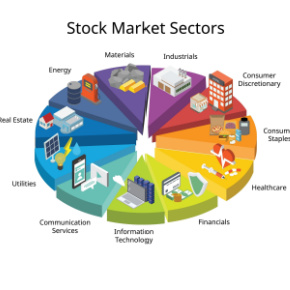“The future can ever promise but one thing and one thing only: surprises.” ― Steven Erikson
As recently as the end of last year, few of us imagined that the world would be debating the political views of Vladimir Putin and its implications on European peace. Putin’s desire to ‘protect the rights’ of Russians living in the Ukraine and Crimea sounds disturbingly similar to Hitler’s view of the greater German Reich in the late 1930s.
Most Americans are generally ignorant of Europe’s cultural and political differences and its history of regional conflict and border disputes. It is inconceivable to us that these seemingly petty differences can lead to armed conflict in the 21st century.
But sectarian and religious confrontation is all around us, in Eastern Europe, the Middle East and even in South America. It is only in the developed world that we have been mostly immune to this geopolitical reality, which is why the Russian expansionist sentiment is especially troubling. So far, the uncertainty regarding the Ukraine has not dramatically impacted equity markets, but the longer the conflict draws out, the more we might expect increased volatility and uncertainty.
A global investor needs to consider the impact of political, economic and behavioral influences on capital markets. Most of the time, investors don’t like surprises. Sudden shocks disrupt our carefully crafted scenarios of the future.
In surprising and uncertain times, we like to keep our investment eggs in more than one basket because we know that surprises can lead to positive results in one segment of the global economy and negative results in others. Effective diversification is how we deal with the uncertainty of future surprises.
Global Equities
| Stock Indices | Q1 2014 | 2013 |
| Global, All Country (MSCI ACWI) | 1.1% | 22.8% |
| US Large Cap (S&P 500) | 1.8% | 32.4% |
| US Small Cap (Russell 2000) | 1.1% | 38.8% |
| Non-US Developed (MSCI EAFE) | 0.7% | 22.8% |
| Non-US Emerging (MSCI EMG) | -0.4% | -2.6% |
| Gold Bullion | 7.5% | -27.8% |
Equity performance in the first quarter was somewhat more volatile than the full results for the quarter would indicate. The quarter began with domestic equity indices at record highs.
January brought us stocks trading sideways and then decisively negative (off 5%) on emerging markets currency fears. In February, markets regained all of the January loss as the currency scare settled down.
For much of March, stocks treaded water as the world watched the unfolding geopolitical crisis in Crimea; however, a solid rally on the last day of the quarter settled most equity indices into positive territory for the quarter and a record high was set by the S&P 500 Index (SPX) on April 1st.
For the full quarter, U.S. equities achieved muted gains in the 1st quarter with returns for most indices in the low single digits. In the U.S., midcaps led equity performance (Russell Midcap RMCC: +3.5%). Large and small caps fared less well but remained in positive territory (Russell Top 200 RT200: +1.4%, Russell 2000 RUT: +1.1%).
Within the S&P 500, defensive sectors performed best with utilities (+10.1%) and healthcare (+5.8%) leading the way. Consumer Discretionary (-2.8%) was the worst performing S&P sector and the only one to post a negative return for the quarter.
Foreign equities lagged their U.S. counterparts in both local currency and U.S. dollar terms (MSCI EAFE, up +0.7%). Currency impacts were muted in the 1st quarter as the euro and UK pound were flat while the Japanese yen and Australian & NZ dollars advanced.
Value outperformed growth (EAFE Value: +1.2%, Growth: +0.1%) while small caps (MSCI EAFE SC: +3.4%) produced the best returns among foreign stocks. Regionally, Europe was strong as the high debt to GDP countries such as Portugal, Italy, Ireland, Greece and Spain (PIIGS) enjoyed equity rallies. Results around the Pacific Rim were generally strong as well with the major exception of Japan, which fell more than 5% in U.S. dollar terms.
Emerging market equities continued their recent weaknesses and posted fractional losses for the quarter (MSCI EM US$: -0.4). On a country specific basis, Israeli stocks produced the strongest results in the developed world (MSCI Israel: +18.5%) while Japan was far and away the poorest performer (MSCI Japan: -5.6%).
Among emerging countries, Indonesian equities rode an 8% currency rally to the top quarterly performance (MSCI Indonesia: +21.2%) and was followed closely by Greece whose equity markets continued to rally after being reassigned to the emerging markets (MSCI Greece: +18.1%).
Russia’s invasion of Crimea caused a sharp dislocation in both its equity and currency markets. Russian stocks fell nearly 10% and the ruble shed nearly 5% (MSCI Russia: -14.4%).
Rounding out equity performance, U.S. securitized real estate (NAREIT Equity: +10.0%) turned in the best performance in the capital markets after a dismal year in 2013. The REIT rally was broad-based with apartments (+13.8%) and storage (+13.1%) leading sector results while lodging/hotels (+5.8%) trailed.
Domestic Fixed Income
| Barclays Bond Indices | Q1 2014 | 2013 |
| US Aggregate | 1.8% | -2.0% |
| US Treasury 20+ yr | 7.8% | -13.9% |
| US Treasury TIPS | 1.9% | -8.6% |
Intermediate and long-term interest rates fell during the 1st quarter and taxable and tax-exempt indices posted positive returns. The yield on the 10-year U.S. Treasury dropped 31 basis points from its level at year-end to finish the quarter at 2.73%. Long dated bonds performed best as the yield curve flattened. High yield performed in line with investment grade credit, both up roughly 3%. Outside the U.S., developed and emerging markets debt also posted solid returns for the quarter.
For the full quarter, longer maturity bonds sharply outperformed short and intermediate maturities due both to falling interest rates and the reshaping of the yield curve.
The Barclays Long Treasury (20+) index returned 7.8% for the quarter while the Intermediate Treasury index posted a 0.7% return. The Barclays TIPS index returned 1.9% for the quarter, in line with similar duration nominal Treasuries.
From a sector perspective, corporate bonds posted the best returns while returns from mortgages were essentially flat, relative to U.S. Treasuries. Investment grade corporates outperformed like-duration Treasuries by 70 bps for the quarter, with the Baa rated tier performing best.
The Baa Corporate sector returned 3.52% and outperformed the Barclays High Yield index, up 2.98%. Bank loans, as measured by the S&P/LSTA index, returned 1.2% for the quarter.
Fixed income returns in developed markets were generally strong in the 1st quarter. The Barclays Global Aggregate ex-US index returned 2.2% in dollar terms due to U.S. dollar weakness against some developed country currencies.
In emerging markets, U.S. dollar-denominated sovereign debt performed very well (JPM EMBIG Dvsd: +3.7%) while local currency emerging markets debt trailed (JPM GBI-EM Global Dvsd: +1.9%).
In both benchmarks, Russia was the worst performing country (down 3% in local currency and 9% in U.S. dollar terms) and the ruble tumbled to a multi-year low mid-quarter, losing more than 10% versus the U.S. dollar through mid-March on investor angst over the situation in Ukraine.
The municipal market posted positive returns for the quarter amid an improving supply/demand backdrop and a decline in yields. Disappointing economic data, largely attributable to a brutal winter, and investor angst over geopolitical events drove rates lower while low supply and modest inflows, combined with improving credit fundamentals, supported the municipal market.
Among less traditional assets, commodities and REITs generated some of the best returns in capital markets for the quarter. Both commodities and REITs (NAREIT Equity: +10.0%) rallied after languishing in 2013. Commodities were driven higher by softs (GSCI Agriculture: +15.9%, Livestock: +15.0%) and precious metals (GSCI Gold: +6.7%).
Industrial metals and energy were laggards. REITs enjoyed broad appreciation across property types due to more attractive valuations and a favorable interest rate environment. Early indications of hedge fund results indicate returns of roughly 1%; slightly behind most equity and fixed income measures.
In my opinion, the major drivers of 2014 global equity performance will be the global economy, the actions of the central banks, and valuations. The US economy is now reasonably healthy and the Fed’s actions remain accommodative — positive indicators for stock appreciation.
According to S&P and JP Morgan, the forward price-earnings ratio is 15.2; the 20-year average is 16.1. We say again that this differential is small and not inconsistent with the current stage of a five-year bull market rally. While US equity valuations are higher than they were at the beginning of 2013, we do not believe that they are at unreasonably high levels today.
However, a sudden, unforeseen shock causing a change in consumer sentiment or a drop in earnings has the potential to create a sudden rush out of equities. Assuming earnings are constant, every one point change in the PE ratio changes the S&P by nearly 7%. So if we experience a change in sentiment, we might see a dramatic shift; but at this writing, the drivers of such a change in sentiment aren’t clearly visible.
U.S. GDP slowed somewhat in the fourth quarter of 2013 to a 2.6% annualized growth rate after the third quarter’s robust 4.1% rate. Economists attributed the slowdown in large part to the “polar vortex” severe weather conditions across much of the country, a situation that appears to have kept first quarter GDP growth muted as well.
Looking forward, the Fed has trimmed the high end of its GDP growth forecasts slightly with 2016 now estimated at a high of 3.0% versus a high forecast of 3.3% back in September. Baseline and low end forecasts have stayed stable.
Outside the U.S., Europe has emerged from its recession and fourth quarter GDP came in at +0.5% led by strength in Germany and France. However, much of southern Europe remains in economic contraction as fourth quarter GDP in Italy, Spain, and Greece all declined.
Volatility within U.S. equity markets remains well below long-term averages. The CBOE VIX Index (VIX) spent most of the quarter below 15 and only spiked above the long-term average of 20.1 for a single day during the emerging markets currency scare.
Over the course of the quarter, the yield on the 10-year U.S. Treasury Note dropped 31 bps, from a 29-month high of 3.04% at year-end to 2.73% as of March 31st. However, the bigger story was in the flattening of the yield curve. Yields on 30-year U.S. Treasury Bonds fell 40 bps while the 2-year U.S. Treasury Note yield climbed 6 bps. The short end of the curve sold off sharply in March in response to Fed comments suggesting that rates might be hiked sooner than expected.
2014 has commenced with notably improving economic conditions, equity market records, and a currently benign inflationary environment. But we expect to be surprised by the unexpected. As such, we continue to recommend prudent asset allocation and risk assessment based on future capital needs for both plan sponsors and individual investors. As always, adherence to well-developed and sound investment policies remains the most prudent long-term course for investors.
The wisest investment course may appear to be counter-intuitive. When everybody is buying, consider selling. When everyone is selling, consider buying. One of the reasons we like our measured and disciplined approach to asset allocation and portfolio management is that we don’t tend to overreact to short term noise, but remain within self-imposed boundaries that we believe will build wealth over the long term.
It is hard to do, especially when fear, confusion and surprises surround us, but our indicators of global equity risk continue to be positive. We’re staying the course, trusting in our disciplined process and long term investment framework.
DISCLAIMER: The reader should not assume that any investments identified were or will be profitable or that any investment recommendations or investment decisions we make in the future will be profitable. Past performance is no guarantee of future results.



